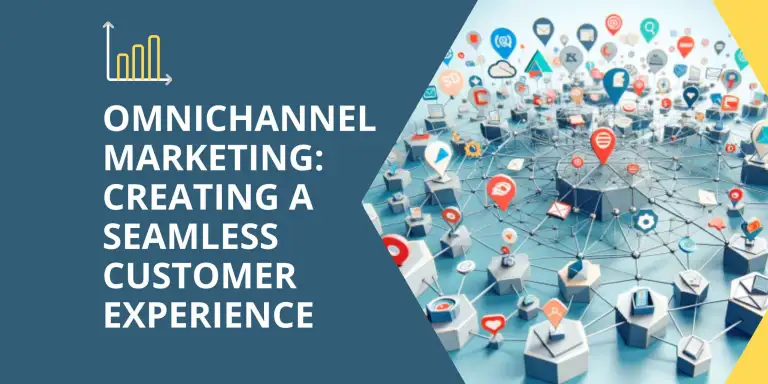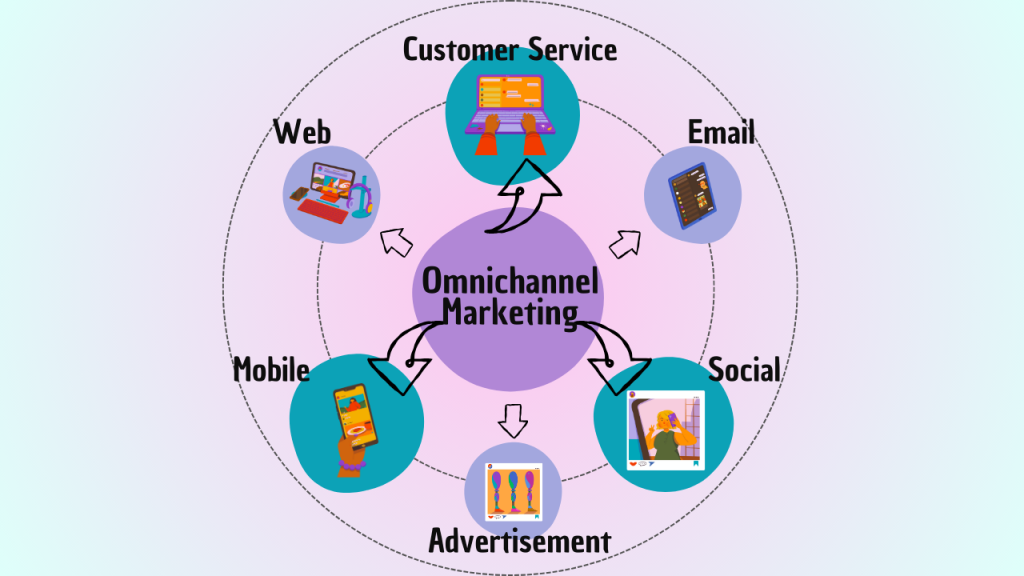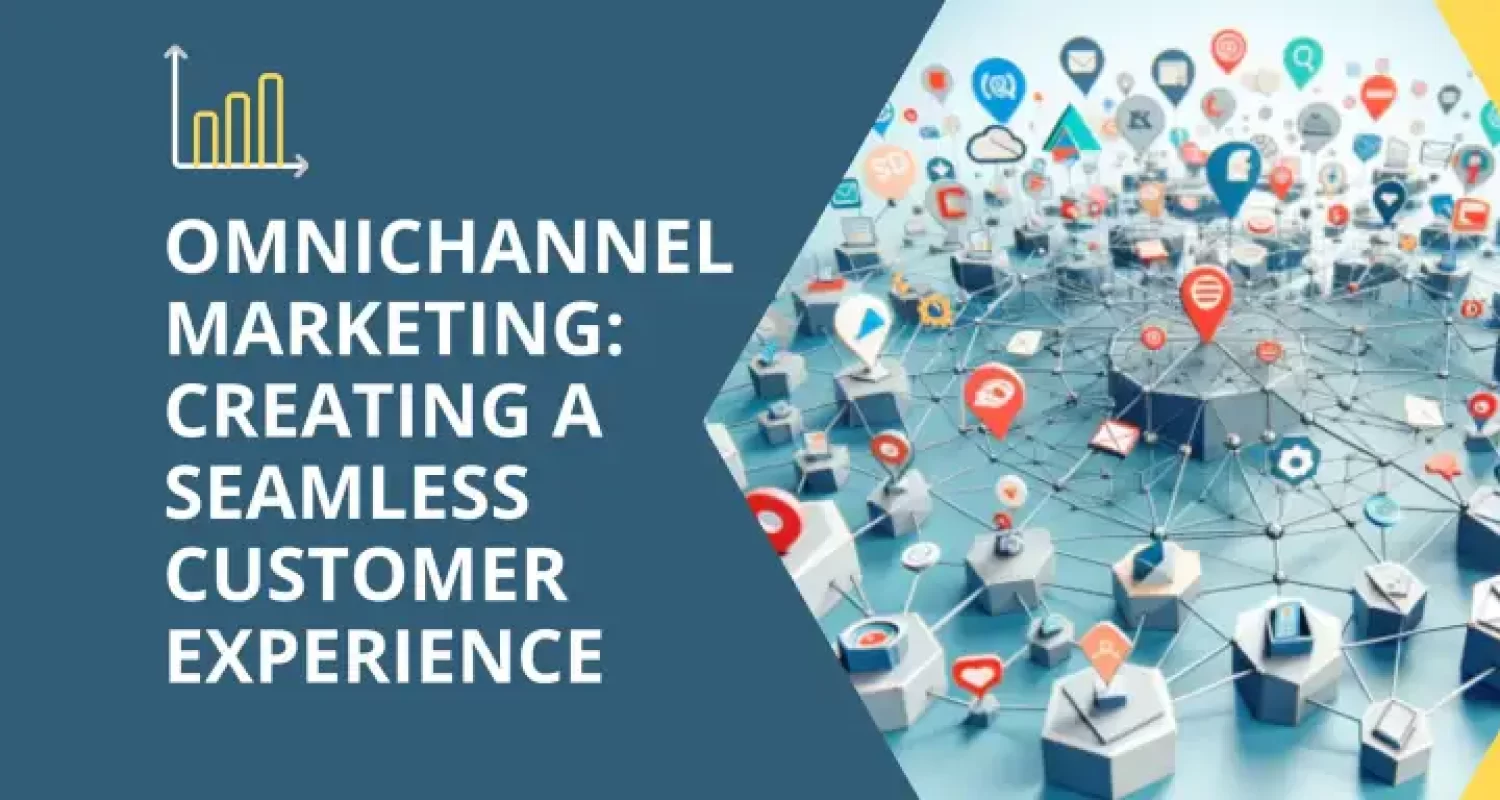
In today’s highly connected world, customers expect seamless interactions with brands across all platforms. Whether they are browsing products on their phones, engaging with a brand on social media, or visiting a physical store, they want their experience to be consistent. Omnichannel marketing is the strategy that allows brands to deliver this cohesive and unified experience across all touchpoints. But what exactly is omnichannel marketing, and how can businesses use it to create a seamless customer journey? In this detailed guide, we will dive into the essential elements of omnichannel marketing, explore its benefits, and offer actionable strategies to help your business thrive in today’s competitive landscape.
What is Omnichannel Marketing?
Omnichannel marketing is an integrated approach to delivering a unified customer experience across all online and offline channels. Unlike multichannel marketing, where each platform operates independently, omnichannel marketing connects every touchpoint—from a company’s website to its physical store—to ensure that the customer journey is smooth and continuous. This means that a customer can move seamlessly between channels, such as social media, email, brick-and-mortar stores, and customer service, without encountering any friction.
For instance, a customer may start their shopping journey by browsing your website, but later choose to complete the purchase in-store. If your omnichannel strategy is effective, the customer should be able to seamlessly transition between online and offline channels without any hiccups. The key is to ensure consistency in messaging, pricing, and customer service, no matter where the interaction takes place.
By providing a cohesive experience, omnichannel marketing allows businesses to meet customers wherever they are and offer them a personalized, relevant experience at every stage of their journey.
Why Omnichannel Marketing Matters for Businesses Today
Customer expectations have changed dramatically in recent years. Modern consumers demand more than just convenience; they expect a consistent, personalized experience across all interactions with a brand. This is why omnichannel marketing has become essential for businesses looking to stay competitive. Companies that successfully implement an omnichannel strategy can create stronger relationships with their customers, increase engagement, and ultimately improve customer loyalty and satisfaction.
In addition to meeting customer expectations, omnichannel marketing offers businesses a number of advantages. It allows companies to gather data from multiple channels, providing a more comprehensive understanding of customer behavior. This data can then be used to tailor marketing campaigns, improve customer service, and refine product offerings. Moreover, by delivering a consistent experience across all channels, businesses can increase brand recognition and trust, which are critical factors in building long-term customer relationships.
For businesses that fail to implement an omnichannel strategy, the consequences can be severe. Inconsistent messaging, fragmented customer service, and disconnected touchpoints can lead to customer frustration, lost sales, and damage to brand reputation. In today’s fast-paced digital environment, customers are quick to switch brands if their expectations aren’t met, making it more important than ever for businesses to adopt an omnichannel approach.
Key Elements of a Seamless Omnichannel Strategy
Aligning Online and Offline Channels
The foundation of any effective omnichannel strategy is the alignment of online and offline channels. Many customers today start their shopping journey online—whether they’re browsing your website, searching for product reviews, or engaging with your social media content. However, a significant number of them still prefer to complete their purchases in physical stores. To provide a seamless experience, businesses must ensure that pricing, product availability, and promotions are consistent across all channels.
This level of alignment can be challenging, especially for businesses that operate in both the digital and physical spaces. However, by using the right tools and technologies, such as inventory management systems and point-of-sale (POS) systems, businesses can ensure that their customers receive the same level of service no matter where they choose to shop. Additionally, businesses should make sure that customer data, such as purchase history and preferences, is shared across all platforms to deliver a personalized experience.
Leveraging Data to Understand Customer Behavior
One of the most powerful aspects of omnichannel marketing is the ability to collect and analyze data from multiple touchpoints. By tracking customer interactions across online and offline channels, businesses can gain valuable insights into their customers’ preferences, behaviors, and pain points. This data can then be used to create more personalized marketing campaigns, improve product offerings, and deliver a better overall customer experience.
For example, if a customer browses products on your website but doesn’t make a purchase, you can retarget them with personalized ads on social media or send them a follow-up email with a special offer. If a customer frequently purchases products in-store but rarely interacts with your online content, you can use this information to tailor your marketing efforts and encourage them to engage with your brand on digital platforms.
Data-driven marketing is at the heart of a successful omnichannel strategy. By using tools such as customer relationship management (CRM) systems, businesses can create a single, unified view of each customer, which allows them to deliver relevant and timely content across all touchpoints.

Benefits of Omnichannel Marketing
Implementing an omnichannel marketing strategy can provide numerous benefits for businesses, ranging from increased customer satisfaction to higher revenue. Here are some of the key advantages:
- Improved Customer Experience: Omnichannel marketing helps eliminate friction in the customer journey, making it easier for customers to move between channels and complete their purchases. This leads to a more positive experience, which in turn increases customer loyalty and satisfaction.
- Increased Customer Engagement: By delivering personalized content and offers across multiple platforms, businesses can increase customer engagement and build stronger relationships. When customers feel that a brand understands their needs and preferences, they are more likely to remain loyal.
- Higher Revenue: Businesses that implement omnichannel marketing strategies often see higher conversion rates and increased revenue. By reaching customers across multiple channels and delivering a consistent experience, businesses can maximize their opportunities for sales.
- Better Use of Marketing Resources: Omnichannel marketing allows businesses to use their marketing resources more efficiently. Instead of investing in siloed campaigns for each platform, businesses can create integrated campaigns that reach customers across multiple channels.
- Stronger Brand Loyalty: When customers have a positive, consistent experience with a brand, they are more likely to become repeat buyers and brand advocates. Omnichannel marketing fosters this loyalty by providing a seamless, personalized journey.
Common Challenges and How to Overcome Them
While the benefits of omnichannel marketing are clear, implementing this strategy is not without its challenges. One of the most common challenges businesses face is the difficulty of integrating different systems and platforms. Many companies use separate tools for their online and offline operations, making it hard to unify the customer experience.
To overcome this challenge, businesses should invest in technologies that enable integration across all channels. CRM systems, marketing automation platforms, and inventory management systems are essential for creating a cohesive omnichannel experience. These tools allow businesses to track customer interactions, manage data, and ensure consistency across all touchpoints.
Another challenge is ensuring that customer data is properly managed and protected. With omnichannel marketing, businesses are collecting data from multiple sources, which can increase the risk of data breaches and privacy concerns. To address this, businesses should implement robust data security measures and ensure that they are in compliance with privacy regulations, such as the General Data Protection Regulation (GDPR) and the California Consumer Privacy Act (CCPA).
Best Practices for Implementing Omnichannel Marketing
Personalizing the Customer Journey
Personalization is a key element of any successful omnichannel marketing strategy. By using data to understand customer preferences and behaviors, businesses can deliver personalized content, offers, and recommendations that resonate with their audience. This not only improves the customer experience but also increases the likelihood of conversion.
For example, if a customer frequently purchases certain products, you can use this information to recommend similar items or offer personalized discounts. If a customer tends to engage with your brand on social media, you can tailor your content to encourage further interaction.
Using Technology for Integration
To deliver a truly seamless omnichannel experience, businesses must invest in technology that enables integration across all platforms. CRM systems, marketing automation tools, and data analytics solutions are essential for tracking customer interactions, managing data, and providing a consistent experience across all touchpoints.
By leveraging these technologies, businesses can create a unified customer database, which allows them to deliver relevant, personalized content at every stage of the customer journey. Additionally, businesses can use these tools to track the effectiveness of their marketing efforts and make data-driven decisions to optimize their strategies.
Conclusion
Omnichannel marketing is no longer a luxury for businesses—it’s a necessity. As customer expectations continue to evolve, businesses must adopt strategies that provide a seamless, consistent experience across all touchpoints. By aligning online and offline channels, leveraging data to personalize the customer journey, and using technology for integration, businesses can create stronger relationships with their customers, increase engagement, and boost revenue.
While the implementation of an omnichannel strategy can be challenging, the benefits far outweigh the obstacles. Businesses that invest in omnichannel marketing are better positioned to meet the needs of modern consumers, stand out in a crowded marketplace, and drive long-term success.







